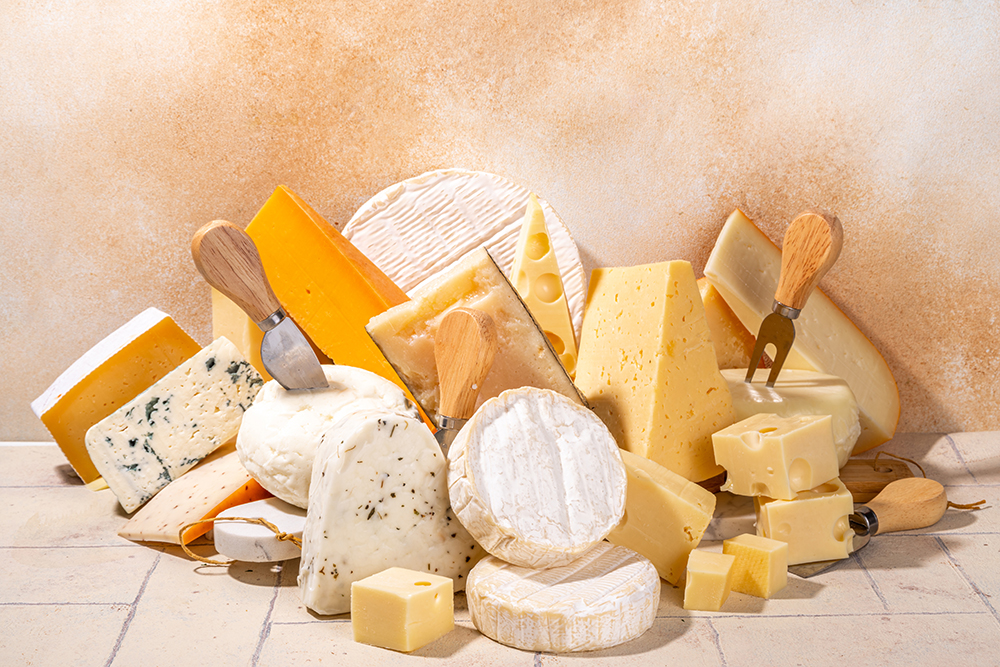















Cheese is one of the oldest and beloved foods in human history, dating back thousands of years. Its origins are often shrouded in mystery, but archaeological evidence suggests that cheese-making began around 8,000 years ago, likely in the regions that are now the Middle East or Central Asia. Early humans discovered that milk could be transformed into a more durable and portable food through fermentation and curdling processes. This accidental discovery—possibly by alpine herders or nomadic tribes—revolutionized their diets by providing a concentrated source of nutrients that could be stored for long periods, especially vital during times of scarcity. Over centuries, cheese evolved from a simple survival food into an art form integrated into various cultures worldwide.
Ancient Civilizations and the Spread of Cheese
As civilizations advanced, the art of cheese-making spread across continents, each culture adding its unique techniques and flavors. The Egyptians, Greeks, and Romans all had their versions of cheese, often used in religious offerings, medicinal cures, or culinary delicacies. The Greeks, in particular, referred to cheese as a gift from the gods, celebrating its nutritional and social importance. The Romans popularized cheese throughout their empire, cultivating a variety of types from soft, fresh cheeses to hard, aged varieties. During this period, cheese-making became more refined, with the development of aging techniques and the creation of cheese as a commodity for trade.
Medieval to Modern Innovations: Refinement and Diversity
During the Middle Ages, cheese-making became more specialized and regional. Monasteries played a significant role in refining recipes and improving techniques, often using their meticulous methods for aging and flavoring. This period saw the emergence of many iconic cheeses, such as Cheddar, Parmesan, and Brie, which are still enjoyed today. The advent of trade routes also introduced new ingredients and concepts, allowing cheese producers to experiement with different milk sources, herbs, and molds. The Renaissance further fueled innovation, leading to more consistent production methods and the establishment of early cheese markets and guilds, which helped preserve traditional practices while encouraging experimentation.
The Industrial Revolution and Mass Production
The Industrial Revolution marked a turning point in cheese history, as technological advancements and mechanization dramatically increased production capacity. Innovations like pasteurization, mass packaging, and refrigeration made cheese more accessible to a broader population and imporved safety standards. Factory-made cheese became common, and large-scale dairies emerged to meet increasing demand. Despite concerns about homogenization and loss of traditional flavors, this era also saw the rise of iconic mass-produced cheeses that became household staples worldwide. Today, the balance between traditional craftsmanship and technological innovation continues to shape the cheese industry, with craft and artisanal cheeses experiencing a renaissance alongside industrial varieties.
Contemporary Trends and Future Directions
In recent decades, there has been a growing appreciation for the diversity and complexity of cheese. Artisanal and small-batch cheeses have gained popularity among consumers seeking unique flavors and high-quality products. This movement emphasizes traditional methods, local ingredients, and sustainable practices, contributing to a revival of regional cheese varieties that were once at risk of fading away. Parallel to this, technological advancements such as microbiome analysis and precision fermentation are opening new frontiers for flavor development and customization, promising an exciting future for cheese innovation.
Moreover, the globalized nature of modern markets has facilitated cross-cultural influences, inspiring fusion cheeses that blend different traditions and ingredients. This fusion not only enriches the palate but also encourages cultural exchange and economic collaboration among cheese-producing regions. Despite these innovations, there remains a strong appreciation for craftsmanship and heritage, with many cheesemakers dedicated to preserving age-old techniques while embracing modern science to enhance quality and safety.
Looking ahead, sustainability will likely become a central focus in cheese production, driven by consumer demand and environmental considerations. Practices such as organic farming, reduced waste, and energy-efficient aging facilities are increasingly integrated into the industry. Upcoming developments in the cheese industry appear poised to balance heritage and modern advancements, ensuring that this beloved food continues to evolve while honoring its rich historical roots.
Embracing Tradition and Innovation in the Cheese Industry
The future of cheese is a harmonious blend of customary practices and cutting-edge techniques. As consumers seek unique flavors and high-quality products, cheesemakers are driven to embrace sustainable practices, integrate modern technologies, and honor regional heritage. Fusing diverse cultural influences and focusing on environmental responsibility will further elevate the industry, ensuring that cheese remains not only a beloved culinary staple but also a vehicle for creativity and cultural exchange. Ultimately, the ongoing balance between craftsmanship and scientific advancement promises a vibrant and sustainable future for cheese lovers worldwide.

 ';
';









